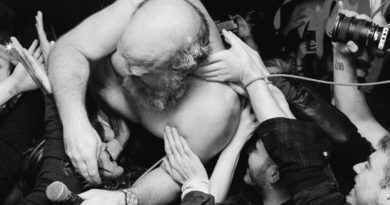Who is looking at whom?: Stephan Gladieu and the first ever portraitures of North Korean lives
Stephan Gladieu is a veteran war photographer who renders his personal on the ground experience to a series of portrait photographers including his North Koreans project. This recent work of Gladieu projects the diversities of the hermetic and supposedly homogenous North Korean society towards us, the viewers of his photographs. Gladieu considers the lighting effects of his portrait photographs as echoes of the desires of the people and visual representations that are conventionally associated with political propaganda iconography. He beams away the desires of the people leaking out from his camera’s frame and reaching multiple audiences. Along these lines, we had an engaging and extensive online conversation with Gladieu, talked about the photographs he has been taking in different parts of the world for the last three decades and the various contemporary art exhibitions and publications they have been part of.
Interview by Mehmet Ekinci, conducted in October 2020
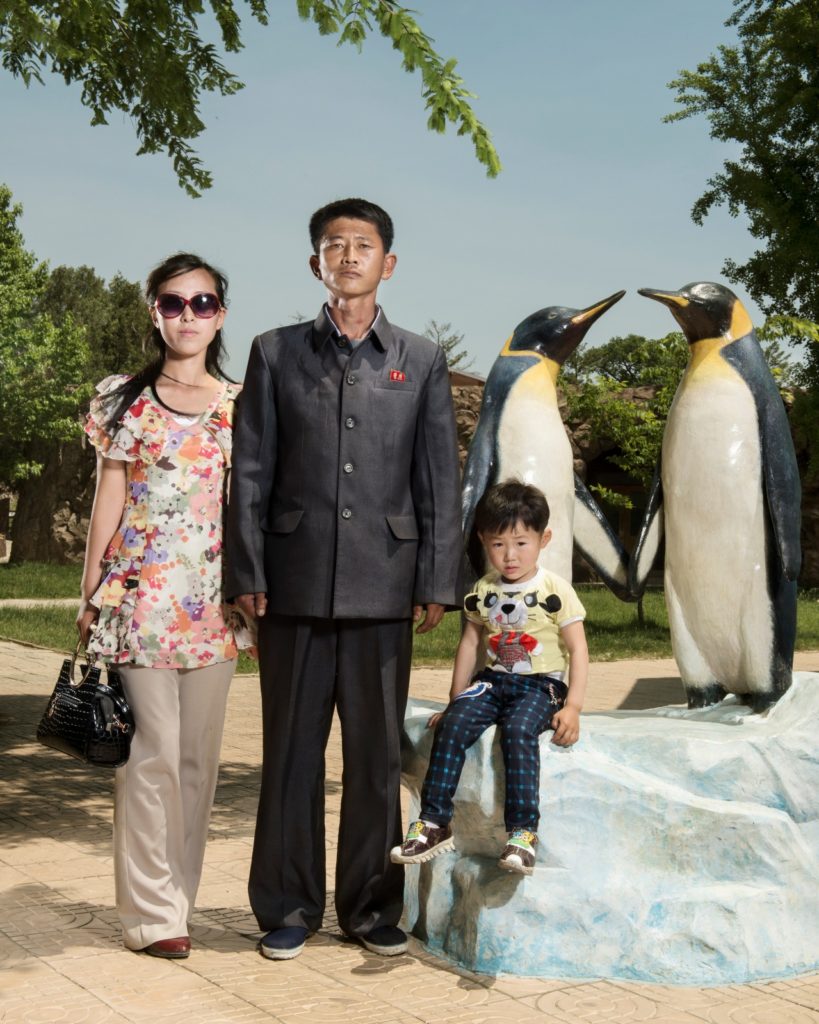
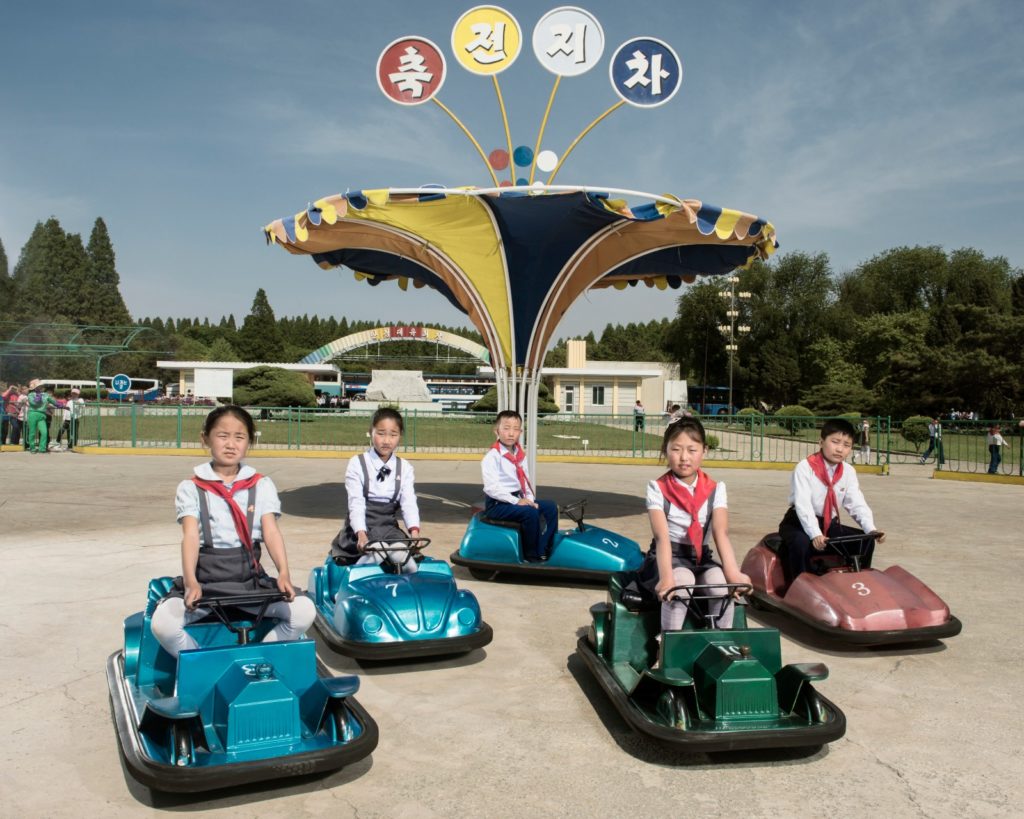
Let’s start with the current situation that affects us all in the particular places where we live in different parts of the world. How has Covid-19 treated you, personally and professionally? Assuming you have been a regular traveller because of your profession, how has your forties affected you in terms of your usual routines and your engagement with the rest of the world?
Covid-19 was of course a revolution for the world of culture and the press. It had a disastrous effect for me professionally because I lost an exhibition at the Rencontres d’Arles (the most important exhibition of art photography in the world). I was doing the poster, with North Korea and my book came out at the same time. And I also had a big exhibition on the grids of the Stade de France. Everything was cancelled, so you can imagine the impact. But my family is in good health, my grandmother, my daughters, my wife and my parents, so everything is fine.
And then, you know, I’m used to dealing with constraints so I’ve been imaginative, I first did a black and white series on “Doctor Plague” in memory of the black plague that ravaged Europe in the 17th century. And then I locked myself in the studio and made still lifes of flowers, it was a novelty for me and it gave me immense pleasure.
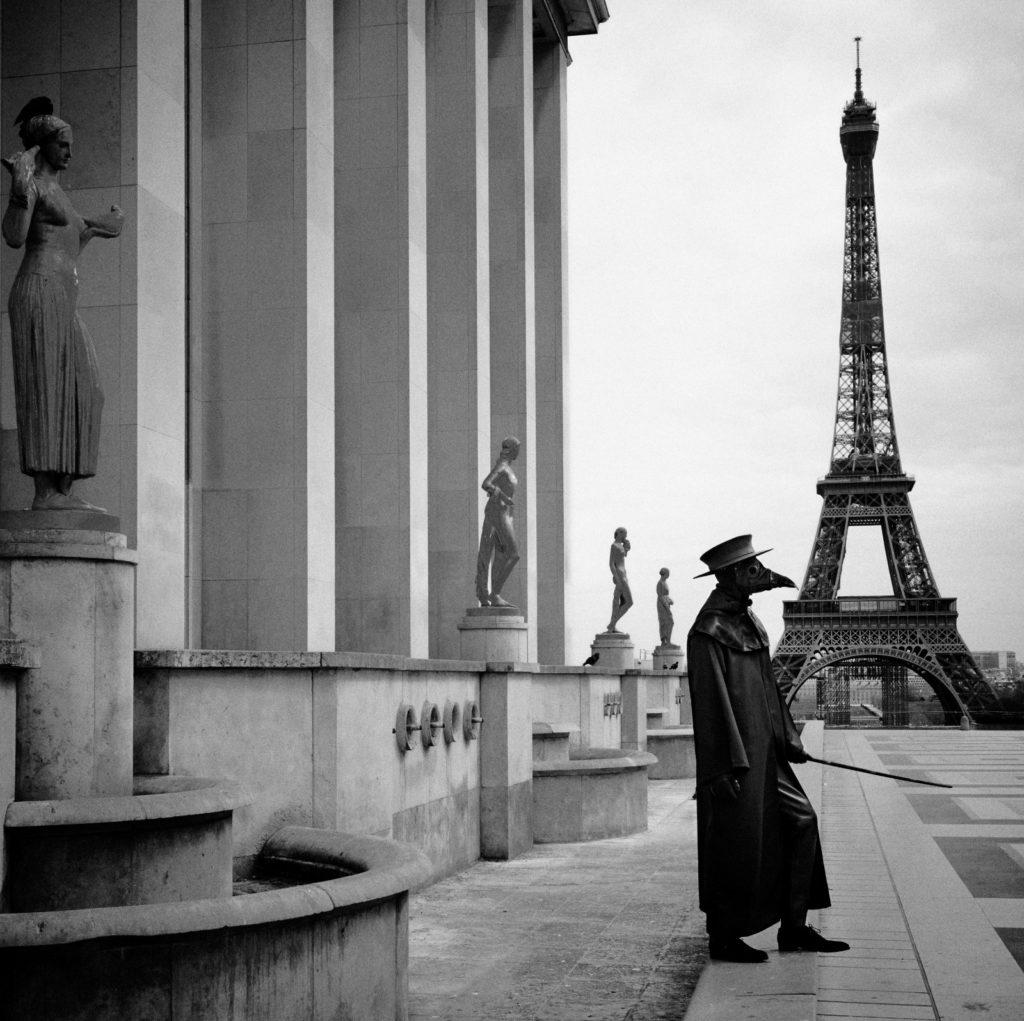
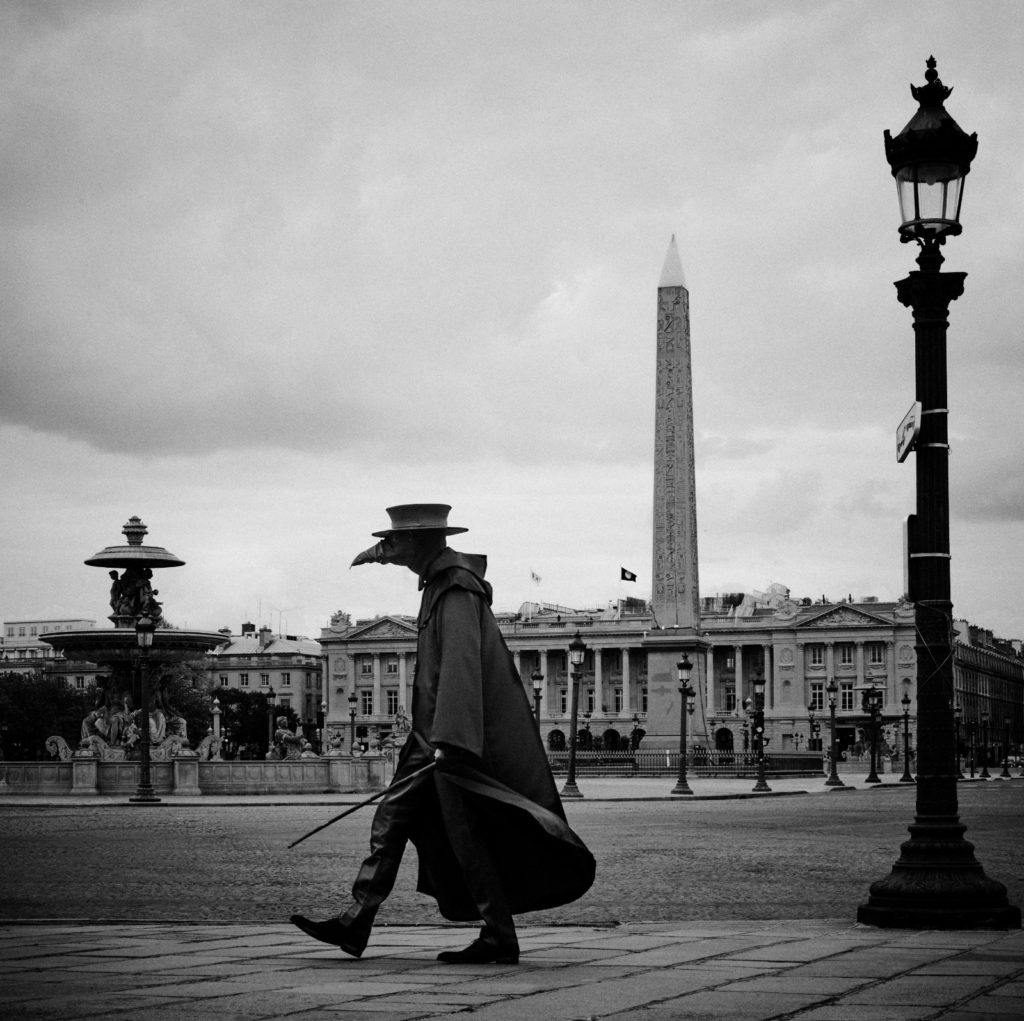
On your personal website, you have a series of black and white photos taken in different public spaces in Paris,the historical character of Doctor Plague wandering alone. The deserted urban landscape of Paris is striking. And this series of photos is probably one of the few in which the person you have photographed is a faceless, masked and anonymous person. But at the same time, it is a very familiar series given the special place Dr. Plague occupies in popular culture and the public imagination. How would you compare this series of current photographs with your previous work, both in terms of meaning and production process?
That’s an interesting point, because you don’t know what I’m working on at the moment. I’m working on the mask. Not as a graphic object but as a link to my work on identity. I have always worked on the human. My deep vision is humanistic, it consists in paying homage or restoring respect to strangers who have lived or are living in a particular situation or in a hermetic society.
In Benin, for example, I am working on a secret society that practices the cult of ancestors. The initiates are able to bring back the spirits of the dead to dialogue with them because African mysticism gives a transverse vision of time and binary names as in the revealed religions.
And the followers of this cult only appear totally masked.
The mask reveals more than it hides because it allows one to free oneself from one’s social identity and to free oneself from a straitjacket in order to become other. I like this parallel because my work has always consisted in crossing barriers, in surpassing myself to become a passer between two worlds.
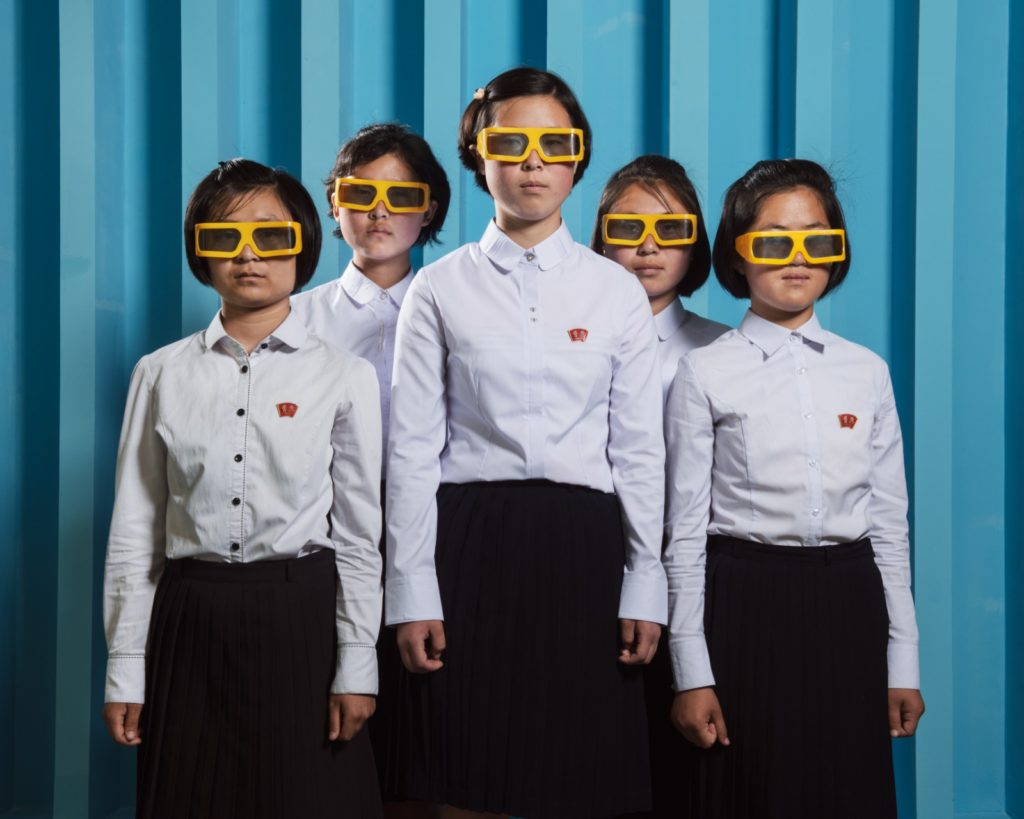
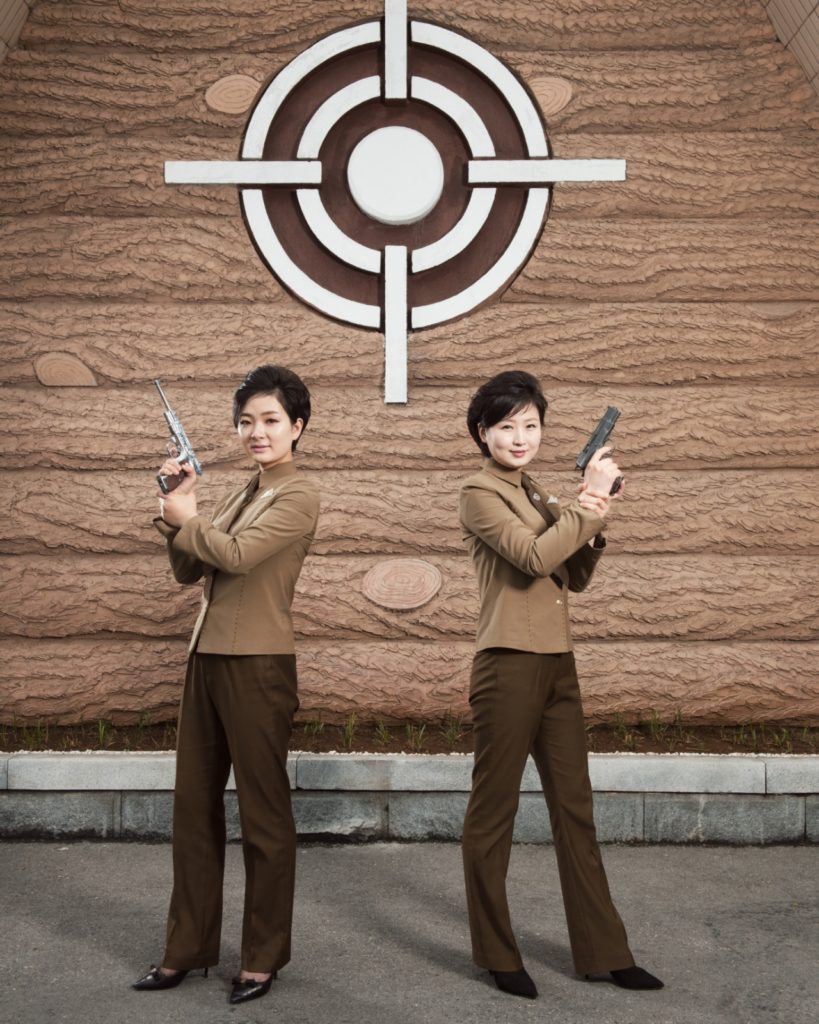
Your recent project on a series of personal and family portraits of North Koreans is captivating and intriguing in many ways. In your previous interviews, you mentioned that your trip to North Korea turned out to be a particularly difficult project because of some limitations you faced while meeting and photographing people in Pyongyang. What was particularly surprising and unpredictable for you as this project unfolded throughout your stay in North Korea?
I wanted to make a portrait of North Korean society because I was wondering about the identity of this people. I knew that iconography is very poor in North Korea, it is at the service of propaganda and is expressed mainly through painted or ceramic frescoes. The individual portrait is almost non-existent in North Korea, because the individual only really exists within a group. Collectivism prevents any form of singularity and makes any individualistic concept totally inappropriate.
I also knew that I would always be accompanied in my travels and that my western outlook would be a source of stress for my guides. So I had to invent a framework of freedom within the framework that would be imposed on me. I very quickly decided that to work in North Korea, I had to be legible and reassuring for the authorities. I therefore decided to rely on the codes of North Korean propaganda by overplaying the principle of the frozen portrait that I usually use.
I chose a frontal pose, the subject is looking at us, it is full foot. I don’t try to surprise my subject, I let it fit into the frame. The framing, varies little and I do not cut any poster, status or monument to respect their concern to preserve the integrity of the objects. The lighting, echoes their desire to magnify any pictorial representation.
Making this series was revolutionary for the North Koreans. If they accepted that I imposed the individual portrait for the first time, it was because I was static, legible, almost understandable.
Almost, because I very quickly realised that even by my side, my guides did not perceive the same thing at all as I did because our cultural references are so far apart.
I like to play with the borderline between what is real and what is not, the notion of illusion. Illusion is never where you expect it is its strength. But everything I have photographed exists, I have no direct impact on it, I simply associate a person with a place. There is no montage.
Light is fundamental for me because it reveals colour and is the source of illusion. It is the mastery of this light that fascinates me, and on which I work to enhance my subjects. I associate the flash with natural light, which is indispensable to me, it is the fine fusion of the two that allows me to accentuate the surrealist character of my associations between the character and the place. I call this the mirror portrait because the portrait is for me an intimate mirror of our relationship with the other. It often teaches us as much about ourselves as it does about the person facing us. And we can finally ask ourselves who is looking at whom.
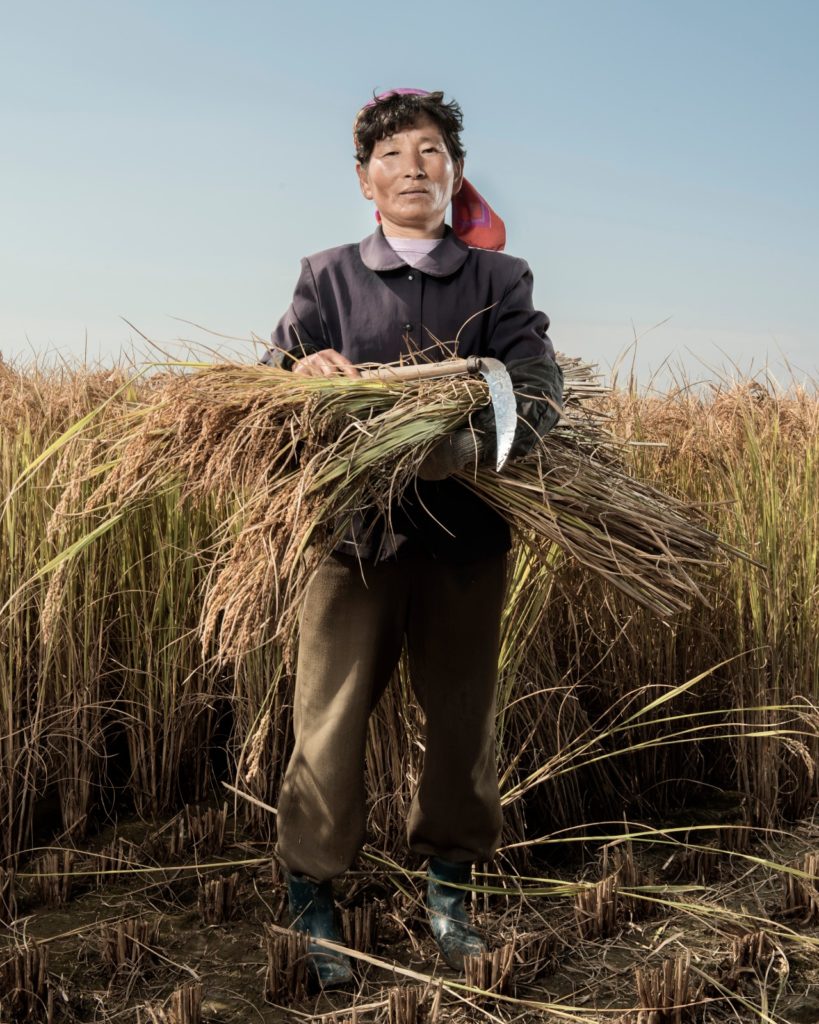
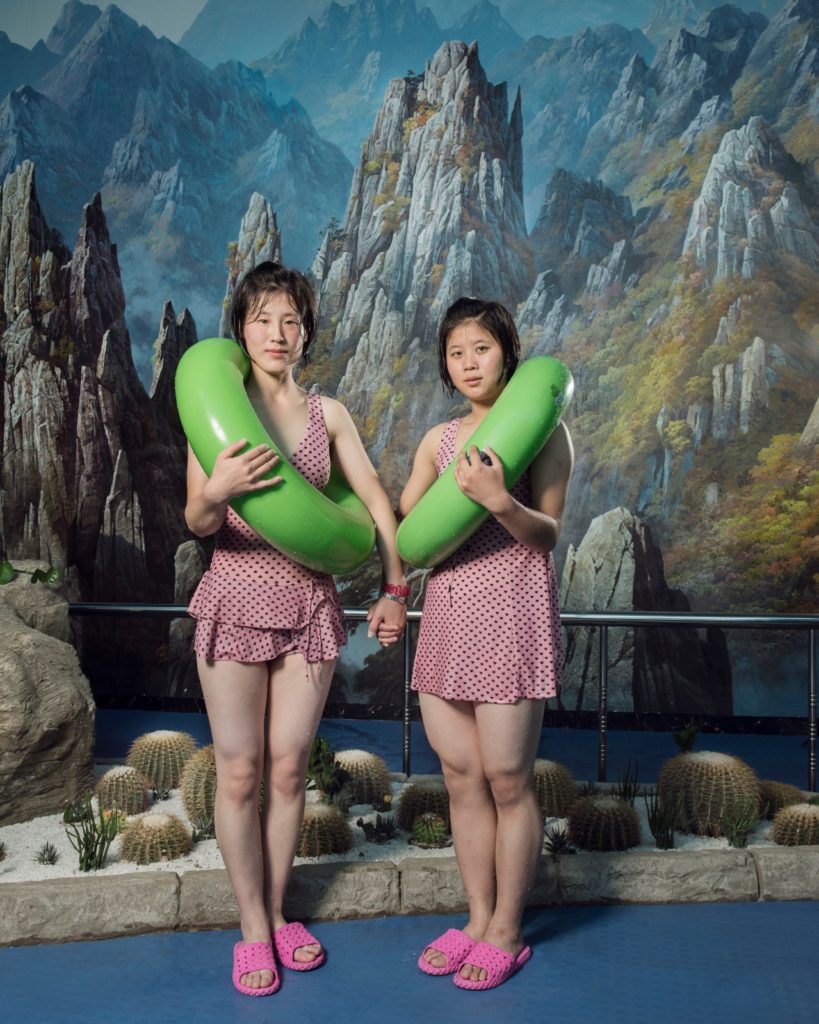
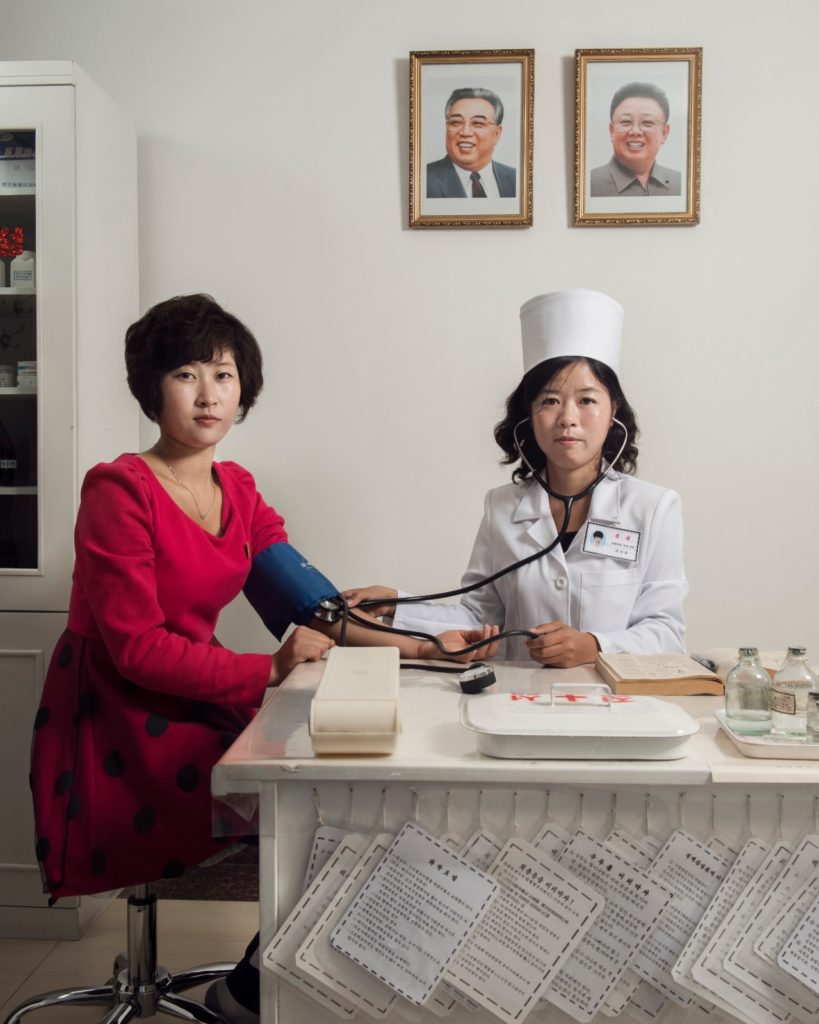
It’s almost as if you know the physical setting and the people of the place before you go there. And this familiarity is also transmitted to the viewers of these photos. The family portraits taken at the Pyongyang Zoo, the farmers working in the fields of Sariwon which, I imagine, is a rather different place from the capital of the country, etc., etc., etc. To what extent do you take into account what the viewer of your photos knows about the culture and people of the place you are photographing? How do these assumptions shape your photography practice?
Indeed, the link between the background and the person being photographed is essential for me. Because as you know photography is about the frame and therefore as opposed to the off-camera. When the spectator looks at an image, they always wonder what they don’t see. It’s natural because photography forces them to look at choices with another eye. In this case, mine.
It is essential to understand that my portraits of North Korea are not staged. In the case of this trip, I always chose the place where the pictures were taken and in 90% of the cases the person I associated with the place, the background. But the person never moved more than 50 metres. This is important because it allows you to understand that what you see is real. It is their reality.
And their reality is about a kind of theateralisation of life. A show within the show.
My eye makes associations to reinforce this effect and thus give a concentrated image of their reality. It is not important that the spectators know something about culture. It’s my role as a passer to try to give them a perception of it that corresponds to my vision. I’m not talking about objectivity, but about sharing, bringing people together. That’s why the subject is looking at us, standing upright and facing us.
I am originally a war photographer who became a society photographer before feeling the desire for a more artistic practice of photography. But I am still attached to the idea of not lying, or as little as possible.
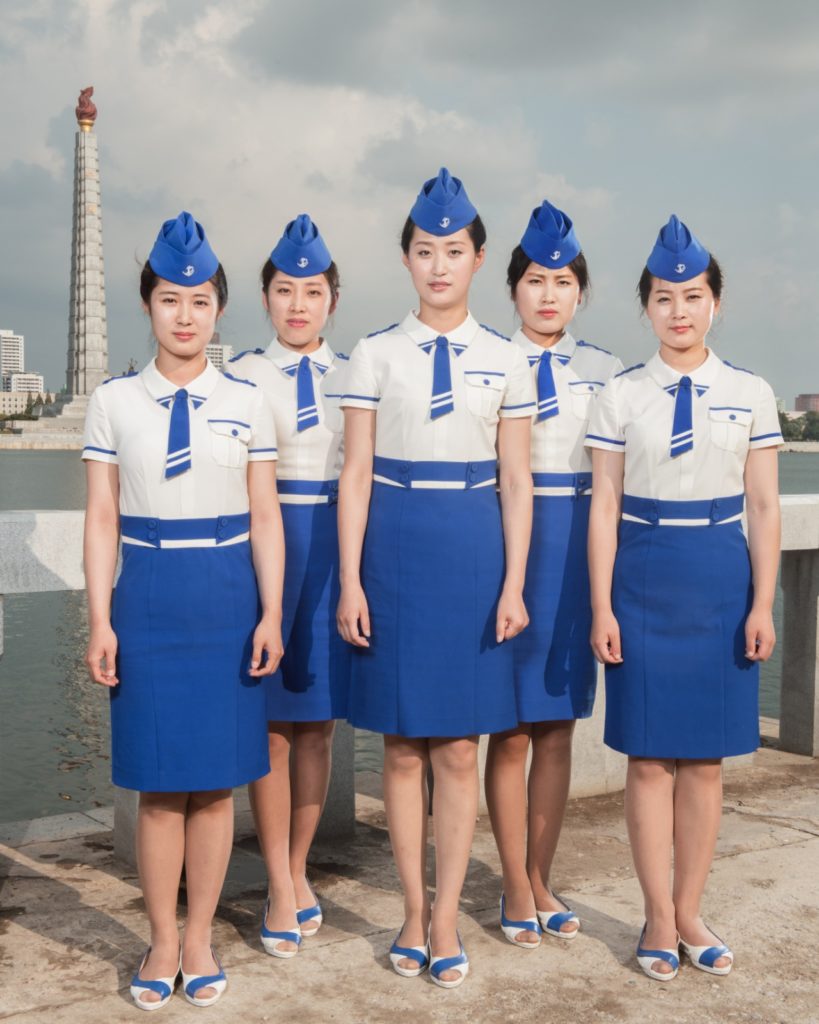
How has the North Korea project been received so far in France and in other countries where this work has been published in the press, covered online or exhibited in public galleries? Are there any particular reactions to your previously published and exhibited work? If so, can you tell us more?
I was lucky enough to be published in National Geographic International, Géo, Figaro Magazine and many others. I was exhibited at Paris Photo in 2019 and was due to be exhibited at the Rencontres d’Arles in 2020 but I hope to be in 2021. Today I have just published a book with this series, so I have received a wonderful reception in France and abroad.
The spectators seem fascinated because it is the first time we discover this people and it is absurd at the same time to imagine this in 2020. What strikes me is the interest that people have in this small country without wealth. This curiosity is astonishing. And on the other hand some people have reproached me for not showing the misery or atrocities committed by the regime… But we are in North Korea, in a totalitarian state and I don’t know many who allow photographers to document their atrocities. And on the other hand, my initial project was to give a face to this totally ignored people.
In your list of publications, one book title draws particular attention: Culture Hip Hop published in 2011. How did you become interested in music photography? Can you tell us about the details of this project? Do you plan to do more music photography?
The aim of this project was not mainly musical, it was to give another vision of these neighbourhoods that surround the north of Paris and that are considered as places of no right. Drug trafficking, violence and a population with very varied origins have always given it a bad reputation.
However, it is here that Hip Hop arrived from the United States in the mid-80s.
I wanted to stage, because this time it is clearly about staging, the artists of Hip Hop culture and putting them in relation with emblematic places in these neighbourhoods. I used old factories, places of worship, historical places to create a dialogue and give a more positive, more creative image. I have just completed another project in these neighbourhoods, on diversity, because I am convinced that diversity is a source of creation and that it allows the advent of a powerful culture. What would France be without all the emigrants who have made it famous.
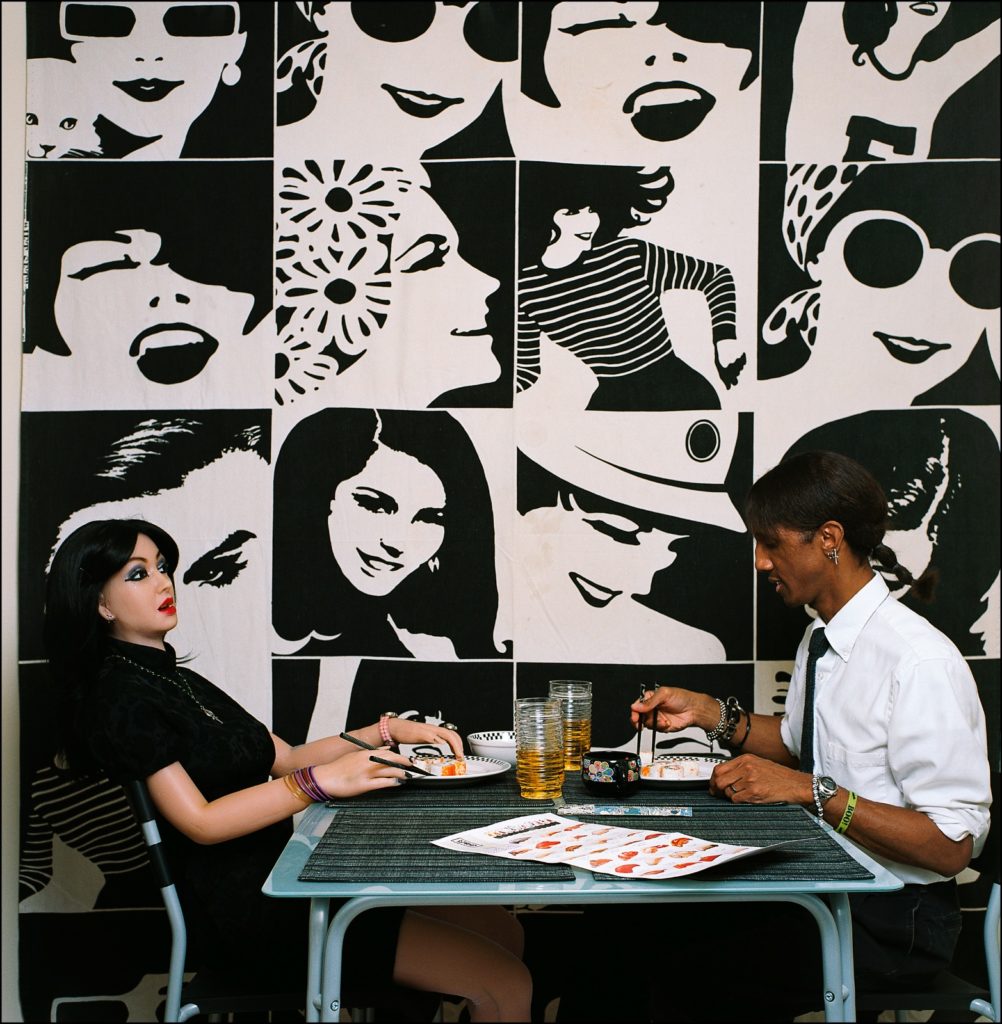
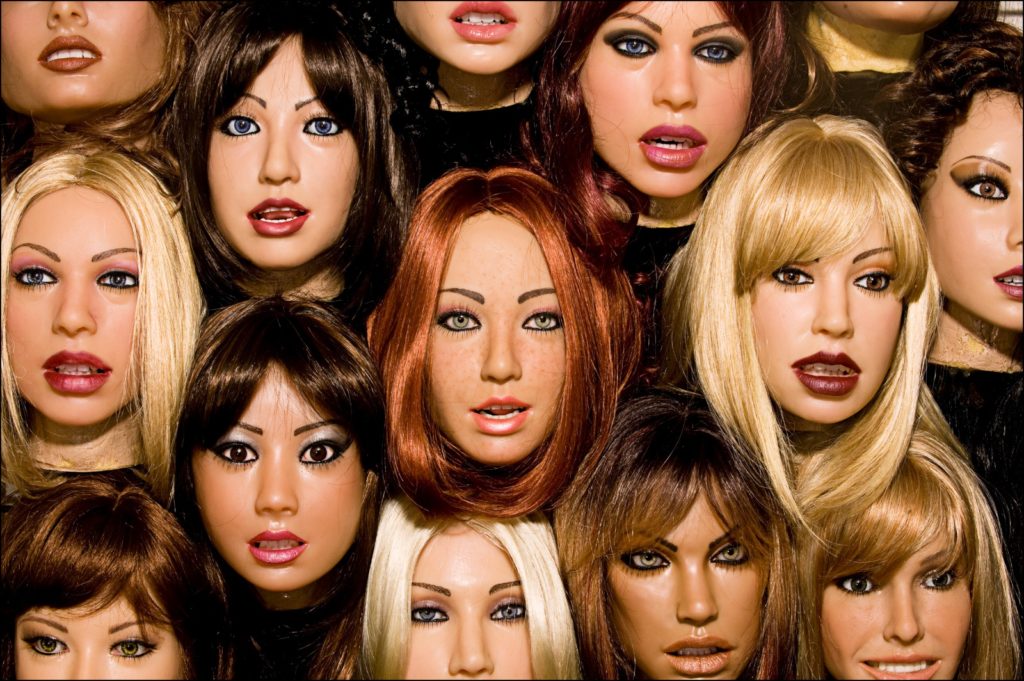
Another project that stands out among many others in your portfolio is the one entitled“Dolls”. You seem to apply the technique of portrait photography to a series of inanimate things rather than living beings. This is particularly interesting because in portrait photography, living people (and animals) are usually transformed into inanimate, statue-like objects. But here it is the opposite. These dolls seem almost alive. Can you tell us about how you treat this interaction between the animate and the inanimate in your work?
First of all, I like the iconic side of the frontal portrait. But I also like to play between the notion of the real and the unreal. So the interaction you’re talking about takes place within this framework. I like to play on the confusion that the dialogue between the notion of the real and the unreal creates. All the more so because once again it is real, these people that you see surrounded by sex dool are real. Unable to weave natural relationships, because of emotional fragility, they prefer to live with dolls to whom they invent a life, a past, a social status.
The fact of voluntarily freezing a scene effectively responds to the final result of the very act of photographing. But I amplify it with my light and this frontal character that becomes iconic.
Since the 1990s, at the beginning of your career as a photographer, you have had the chance to travel to different parts of the world, to transform your encounters and unique impressions into stable, mobile and visual forms in your photographs. Throughout this period, the technological devices for taking, storing and communicating photographic images have also been transformed. How has the evolution of photographic technologies affected your sensibility, your aesthetic choices and the concrete results of your artistic work? Were you enthusiastic about the new technologies that were going to be introduced for photographers’ use? Or do you prefer to remain faithful to the equipment you are used to?
Technological evolution was very disturbing to me at first. I’ve always worked with film and it was expensive so I had to be very precise technically. Suddenly, photography became more affordable for the novice but at the same time the quality went down because many people thought they were photographers. But this became an asset for me, because I continued to work with digital in the same way as analogue (film). And my technical mastery allowed me to open up more possibilities, especially in the management of very low light. But it is above all the progress in lighting equipment that allowed me to bring studio flashes out into the street and to combine my photo-reproduction experience with my skills as a studio portrait painter. I decided to put these two practices in common because very powerful flashes have become portable. But I still don’t crop my photographs and I use photoshop like a traditional lab, I don’t modify my photographs much.
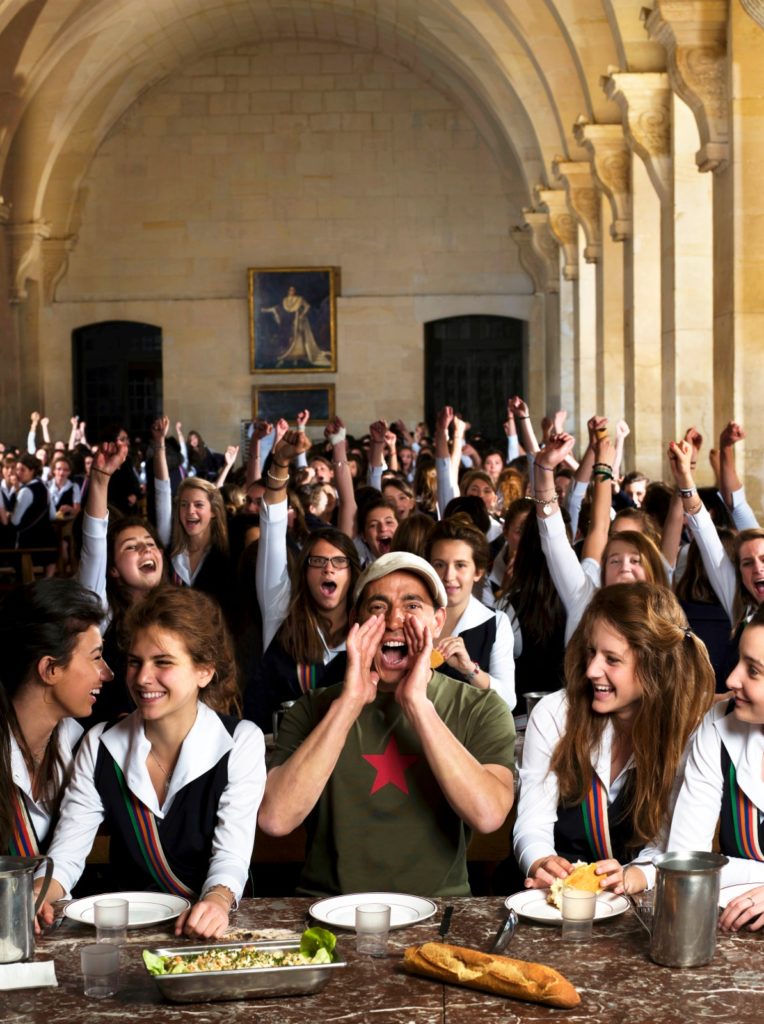
In the same vein, what do you think of the growing visual culture embedded in some social media platforms that makes it easier and faster to take and share photos? What do you think of the “culture of influence” that is somehow generating a new form of portrait photography? Here I compare such ubiquitous images with the works of people like Robert Doisneau, whom you mentioned earlier as an artistic influence for you. Similar cafés in Paris, similar smiles of beautiful people enjoying their food and social company, but very different forms of photography. In short, can you tell us about social media and portrait photography from your point of view?
Social networks are an incredible revolution and like all revolutions there are good sides and disastrous sides. Portrait photography first appeared in the form of painted portraits. But they were intended for the bourgeois, therefore for a rich minority. The photographic portrait thus came as a revolution that democratised the practice of portraiture in all strata of society. Social networks were born at the same time as the development of smart phones. Over the years, the quality of the cameras that are integrated into them has increased in an absolutely hallucinating way and this has allowed everyone to take photos and then to have filters that give the possibility to personalize the images without having any mastery of image processing software, so in this I find it quite magical.
But unfortunately we live in an age of individualism and self-worship. Advertising, politics, economics have segmented society and developed the egothic character of the population.
And today we are in an absurd personality cult where the majority of people don’t tell us anything and above all don’t show us anything. They are victims of a syndrome that consists in imagining what the spectators want them to look like and not in sharing with us what they really are. So we live in a kind of cultural impoverishment where everyone tends to look the same. And this has a very harmful impact, in my opinion, on youth and on their ability to cultivate their singular identity. How can we accept to see an explosion in the use of cosmetic surgery to allow young people to become good role models for Instagram?
Looking ahead today, what are the future projects you would like to achieve? Hoping that travel restrictions between different parts of the world will be less in the years to come, do you have in mind particular people and places to travel and photograph? If such places exist in your mind, can you tell us why?
I will of course continue to travel, either close to home or at the end of the world. I always want to discover new cultures and unique issues. Especially in hermetic societies. I’m finishing my work on ghosts between Benin and Nigeria and I’ve started another series in Kinshasa in the DRC. But I also have a project in the United States on which I am currently doing research as well as other projects on the use of old photographic techniques that I intend to modernize and use to strengthen my purpose on series that I want to make in studio here in Paris.



